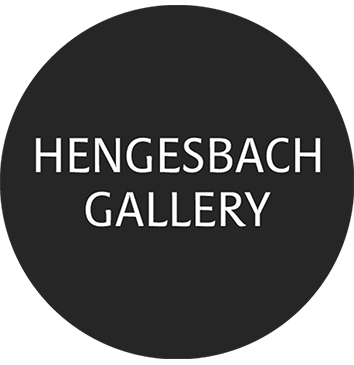Nikola Ukić
September 8 – November 3, 2019
Sculpture in the 20th century has detached itself from the human or animal body, reaching into our surrounding space and adopting a repertoire of geometric or abstract forms. As new measures of scale, architectural elements and structures have come into play, or sculpture now consists in the exploration and marking of open space. Despite seemingly abstract forms, a part of contemporary sculptural production remains, in a distant sense, connected to the human body. This is also true of Nikola Ukic. However, unlike most of his peers, human scale is not the endpoint of his artistic work—it is the starting point.
For Ukic, the two fundamental sculptural components—material and form—are not separate from each other, but originally and inseparably intertwined. He does not work with a preexisting material that he then shapes into form; rather, he generates the material itself within his artistic process. His primary medium is polyurethane—a synthetic substance that forms only through the mixing of various components in a chemical reaction that releases heat and vapors, expands, and then solidifies. In these moments, he simultaneously gives the material its form—though it cannot be a fixed one, since the material expands continuously and forcefully. In this, his physical action becomes the organizing, intervening point of reference. This formative process remains visibly inscribed in the material even after it has hardened.
A similar phenomenon can be observed with volcanic rock, to which Ukic’s works can be compared. His six-part piece *Große Konjunktion* (“Great Conjunction”) evokes the impression that its bubbly surface skin is still in the mode of energetic expansion—as if earth and stone had just been ejected from a crater.
The creation of his own sculptural material is one of the two guiding aspects of Ukic’s work. The other is his engagement with the fact that our perception and experience of the body have significantly changed in recent decades. The tactile, exploratory gaze that seeks to circle and sense the full volume of an object is no longer the dominant paradigm for experiencing objects. Instead, the interpretation of surfaces and their reflected light now takes precedence. Today, objects are mostly presented to us through flat, media-generated images.
In recent years, Ukic has made it his concern to confront his physically pronounced, tactile, volumetric sculptures with the very different kind of bodily experience that today orients itself toward surface. Ukic transfers images onto the surface of his sculptures, where the image may sometimes refer—conceptually or even in its origin—to the work itself.
Generating material requires considerable technical knowledge, whereas generating digital images has become very easy. In his wall-based works, Ukic seeks to make the strategies of generation visible by turning them into the very subject of the images. The starting point can be the depiction of a simple object—such as a die, a piece of meteorite, a droplet of water, or the reflection on a mirrored surface. Through the gradual application of digital image manipulation techniques—such as dimming brightness and contrast, shifting shadows, muting colors, duplicating or overlaying the same image—the image can begin to lose its own identity. Instead, elements like shimmering light, dissolving contours, and unreal color gradients can gain significance, imparting to the image a magical-abstract quality, especially in its tonal values.
At the same time, it becomes clear that these processes can possess a physicality—provided the digital interventions are translated into the printing process in such a way that a multitude of printing layers becomes necessary. This multitude of print passes, even if not individually visible, creates a perceptible sense of the material reality of the color pigments. A paradoxical result arises: the more intense the layering of pigment layers, the more ambiguous the readability of the image becomes.
In this way, Ukic’s approach to image generation mirrors his approach to sculptural creation: only a real volume, no matter how subtle, can exert a believable, suggestive physical force upon us.
In his most recent work, *Große Konjunktion* (“Great Conjunction”), he brings both generative processes—sculptural and visual—together. The individual bodies of the sculpture appear to consist of raw earthen material, while their slanted front-facing sides contrast this with a smooth, glossy, black, blistered surface of high aesthetic appeal.
In front of the volume is a visor-like layer: a thin, transparent membrane that exhibits entirely different, technically geometric, linear inclusions than the polyurethane body behind it. This brittle, materially inorganic yet formally rounded flat body bears a double linear marking—two overlapping black stripes, top and bottom—which, in their color, approach the appearance of the PU body’s front, but in their rigid, linear striping stand apart from it.
The space between the stripes is automatically perceived as a visual field, and thus the conical PU body is interpreted as a reclining head rising from the ground.
Installation Views
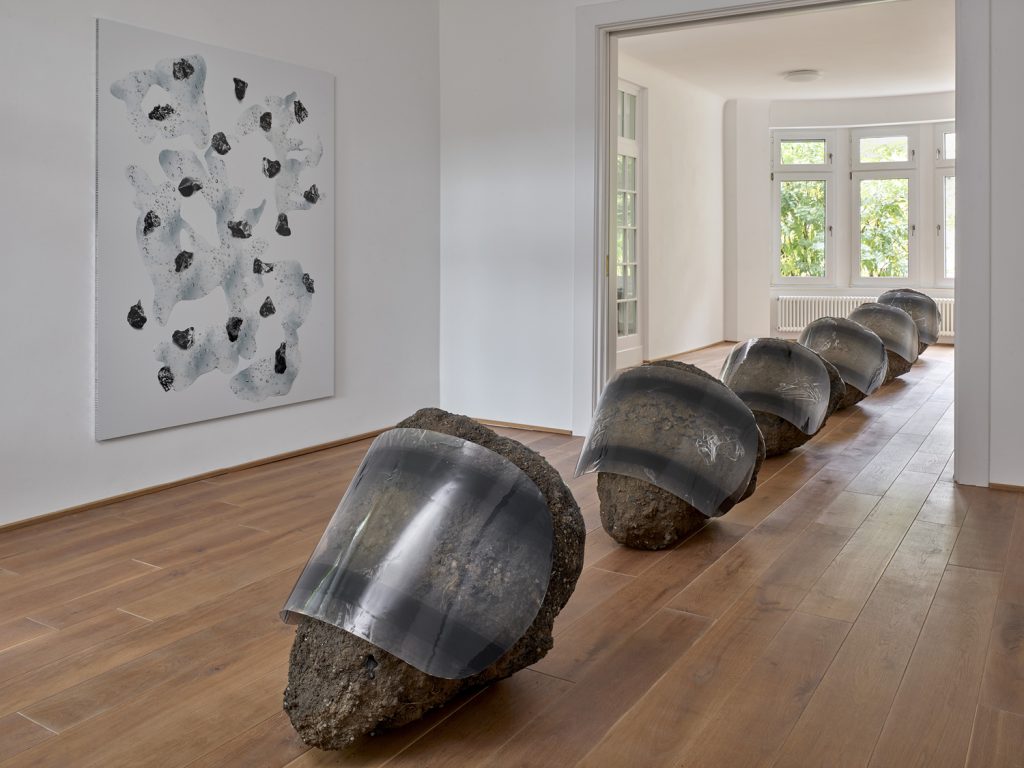
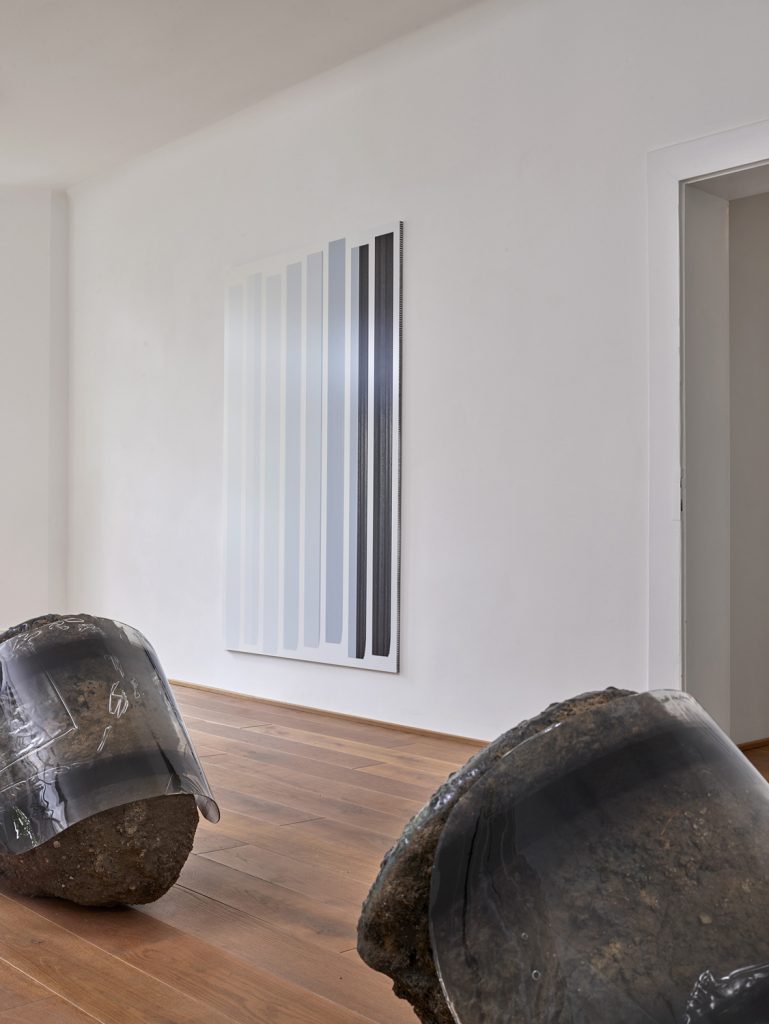
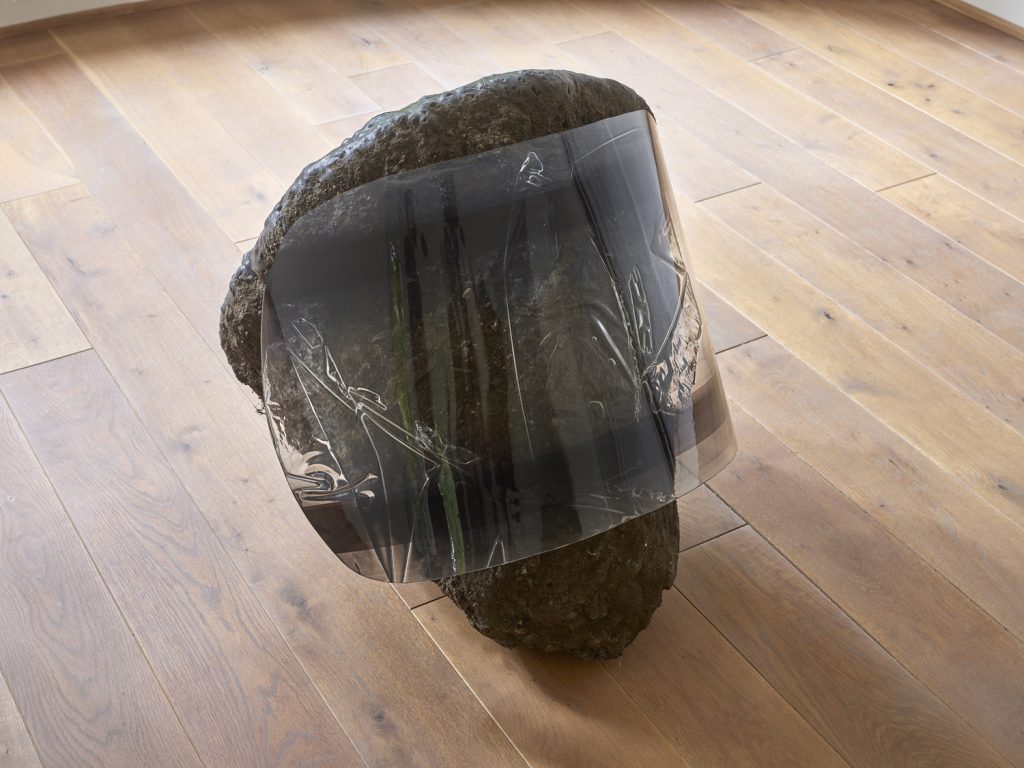
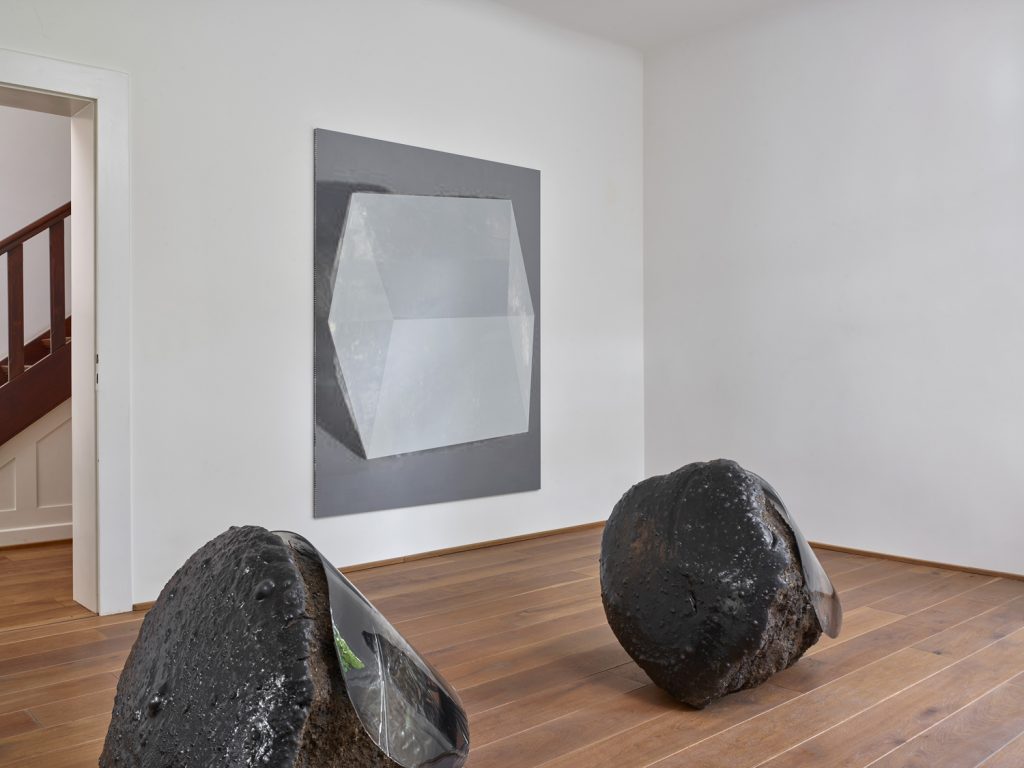
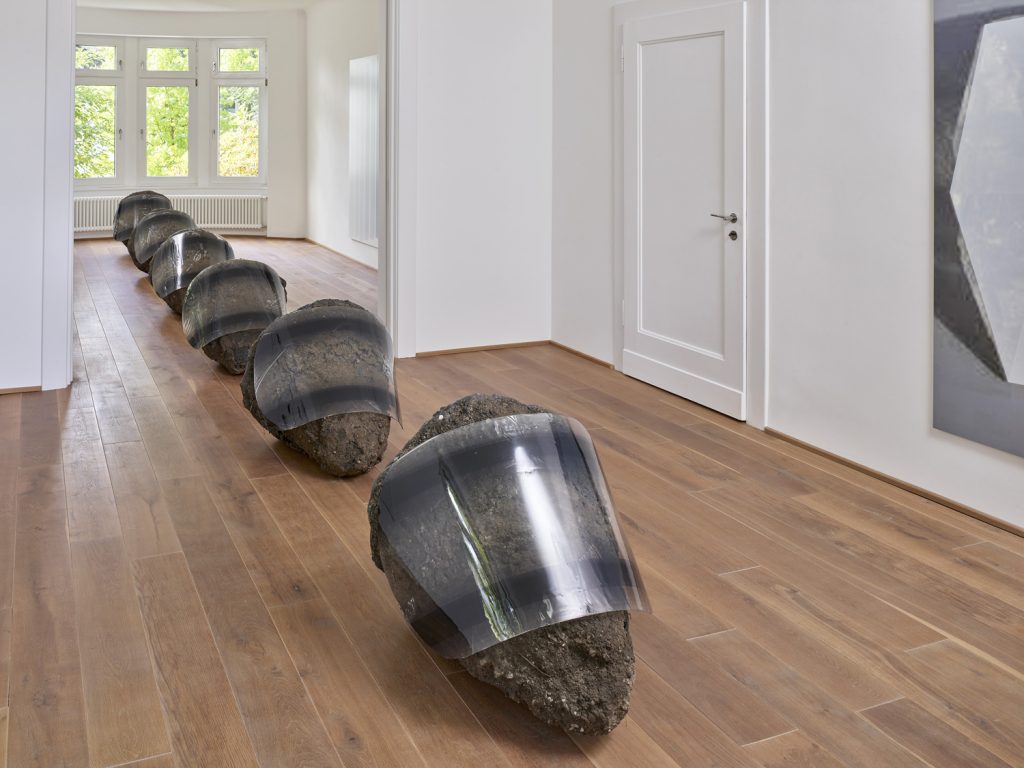
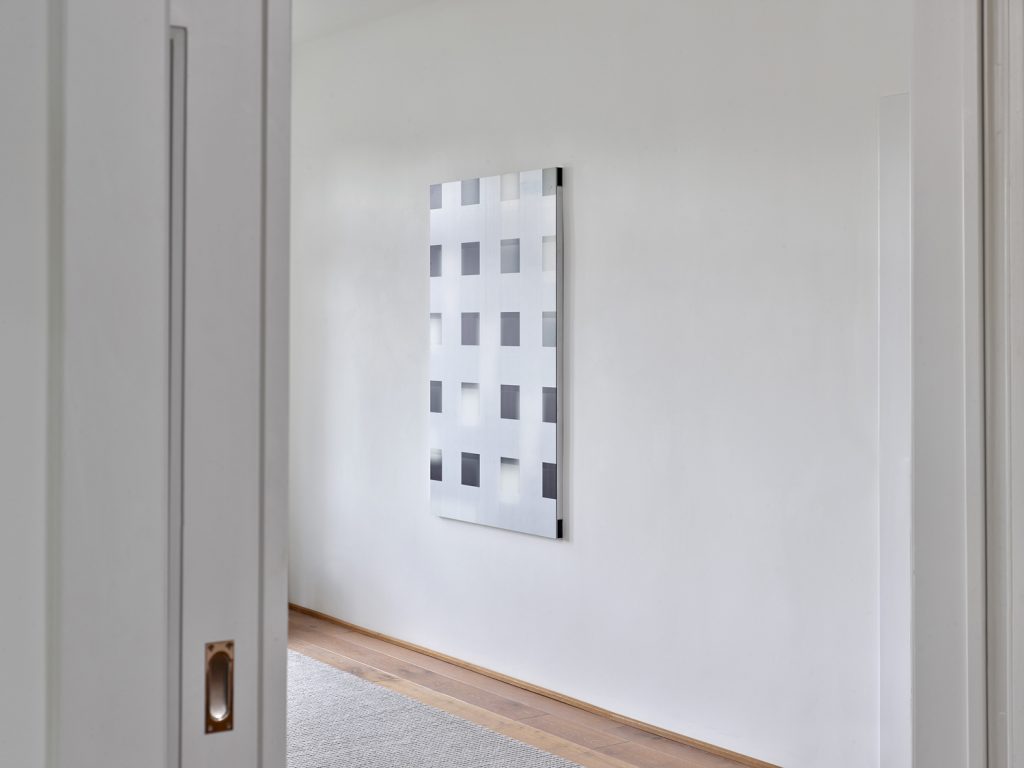
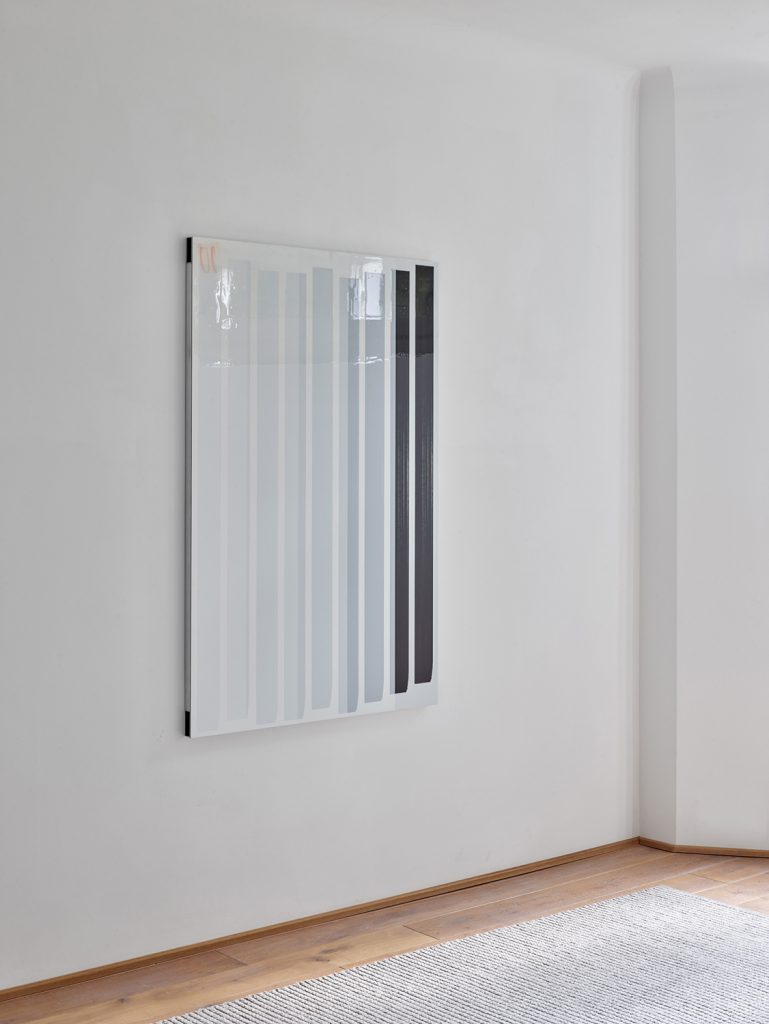
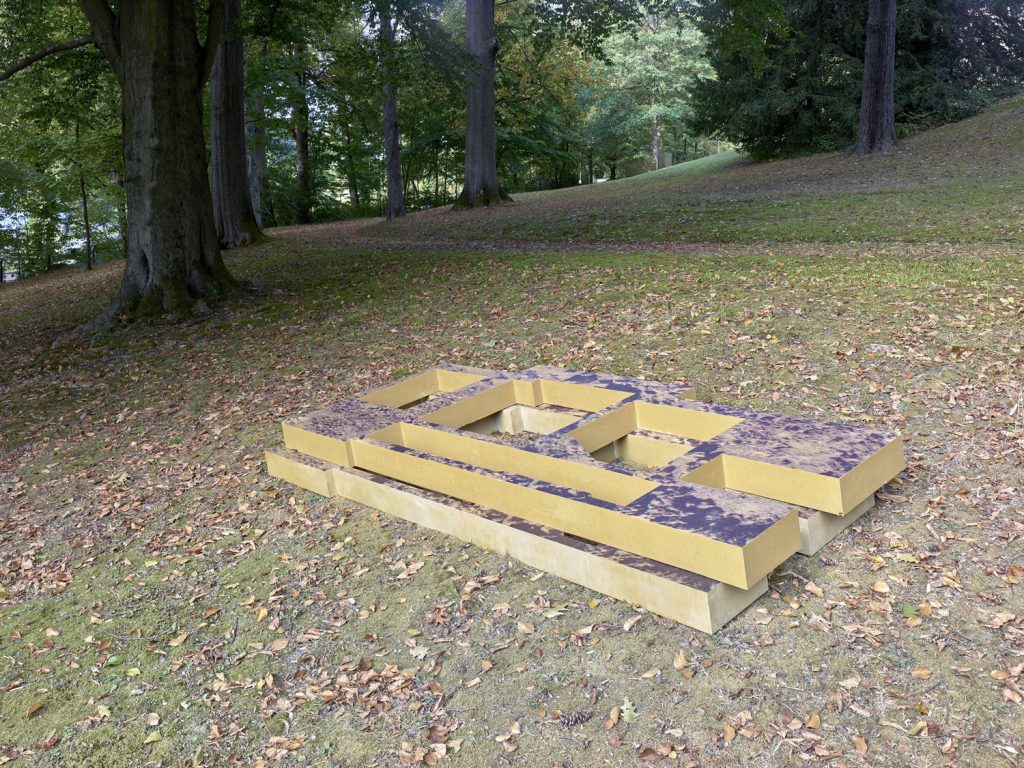
© copyright Achim Kukulies, Düsseldorf
